Medical Disclaimer: This article on calming anxious dogs is for informational purposes only and does not constitute medical advice. The content is not intended to be a substitute for professional veterinary advice, diagnosis, or treatment. Always seek the advice of your veterinarian with any questions you may have regarding your dog’s medical condition and the best approaches for your dog.
Table of Contents
That tell-tale sign of a tucked tail, the frantic panting during a thunderstorm, or the destructive behaviour when you leave the house, they’re all heartbreaking signs of a worried mind. As a veterinarian in Ottawa for over eight years, I’ve sat with countless owners who feel helpless. But you’re not alone, and there is so much we can do to help on the journey of calming anxious dogs.
Key Takeaways
Feeling overwhelmed? Start here. The most effective approach to calming anxious dogs involves a two-pronged strategy. For immediate relief, focus on creating a calm environment, using gentle massage, and providing a “haven” like a crate with a favourite toy. Pheromone diffusers can also offer quick comfort. For long-term success, consistency is key. Build a predictable daily routine, incorporate positive reinforcement training, and ensure your dog gets plenty of physical and mental exercise. For persistent anxiety, calming supplements can be a helpful aid, but a consultation with your veterinarian is crucial to rule out underlying medical issues and create a tailored plan for calming your anxious dogs.
Understanding Why Your Dog is Anxious
Before we can begin the process of calming anxious dogs, we first need to understand the root of the problem. Anxiety in dogs isn’t a sign of bad behaviour; it’s a genuine emotional response to a trigger, often stemming from fear, past trauma, or even a lack of proper socialization.
Common Triggers: From Loud Noises to Separation
In my practice, I see a wide range of triggers. The most common culprits include loud noises like fireworks or thunderstorms, which can be terrifying for a dog’s sensitive hearing. Another significant source of stress is separation anxiety, a condition where dogs panic when left alone. Other triggers can be more subtle, such as car rides, meeting new people or dogs, or even changes in the household routine. The Merck Veterinary Manual on behavioral problems provides an excellent overview of how these fears can manifest. Understanding the specific trigger is the first step in creating an effective plan for calming your anxious dog.
Subtle Signs of Anxiety You Might Be Missing
Many owners recognize obvious signs like trembling or hiding, but anxiety often presents in more discreet ways. Are you noticing excessive lip licking, yawning when not tired, or a sudden lack of appetite? These can all be quite pleas for help. Some dogs become “Velcro dogs,” refusing to leave their owner’s side, while others might start pacing restlessly. Recognizing these early, subtle cues allows you to intervene before the anxiety escalates, making the task of calming your anxious dog much more manageable.
Immediate Comfort: 5 Techniques for In-the-Moment Relief
Also see: https://doglifeexpert.com/dog-head-tilt-7-surprising-reasons/
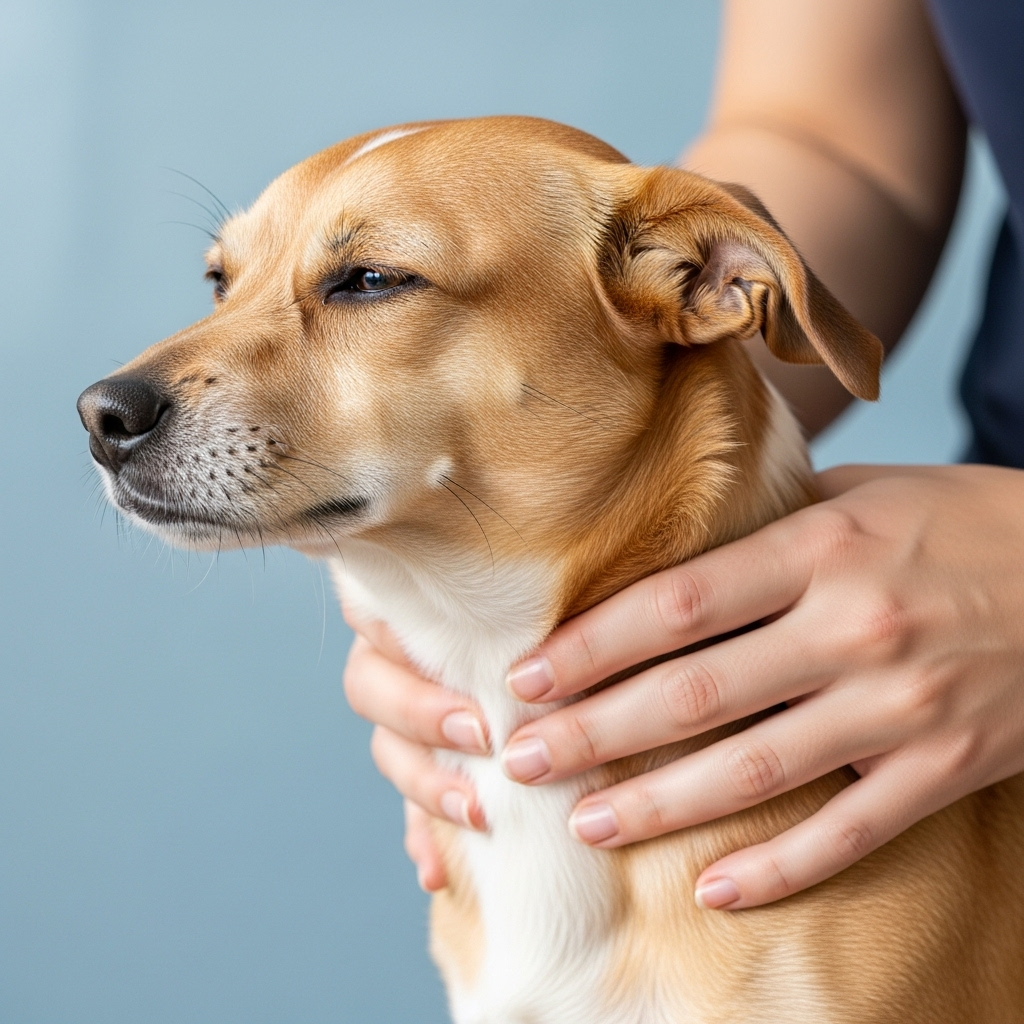
When your dog is in the throes of a panic attack, you need tools that work right away. The goal here isn’t to solve the underlying problem but to de-escalate the situation and provide immediate comfort.
1. The Power of a Calm Presence
First and foremost, your dog takes cues from you. If you become frantic, stressed, or overly coddling, you can inadvertently signal that there is something to fear. Speak in a calm, soothing voice. Move slowly and predictably. Your serene presence is one of the most powerful tools for calming anxious dogs.
2. Gentle Massage & TTouch
Never underestimate the power of therapeutic touch. Gentle, long strokes along your dog’s back can be incredibly soothing. Some dogs also respond well to TTouch, a specific method of circular touches designed to release tension. I remember a small terrier mix in my clinic who was terrified of nail trims; a few minutes of gentle ear rubs and slow strokes along his spine made the experience much less stressful for him. This is a simple yet effective method for calming an anxious dog.
3. Create a Safe Haven
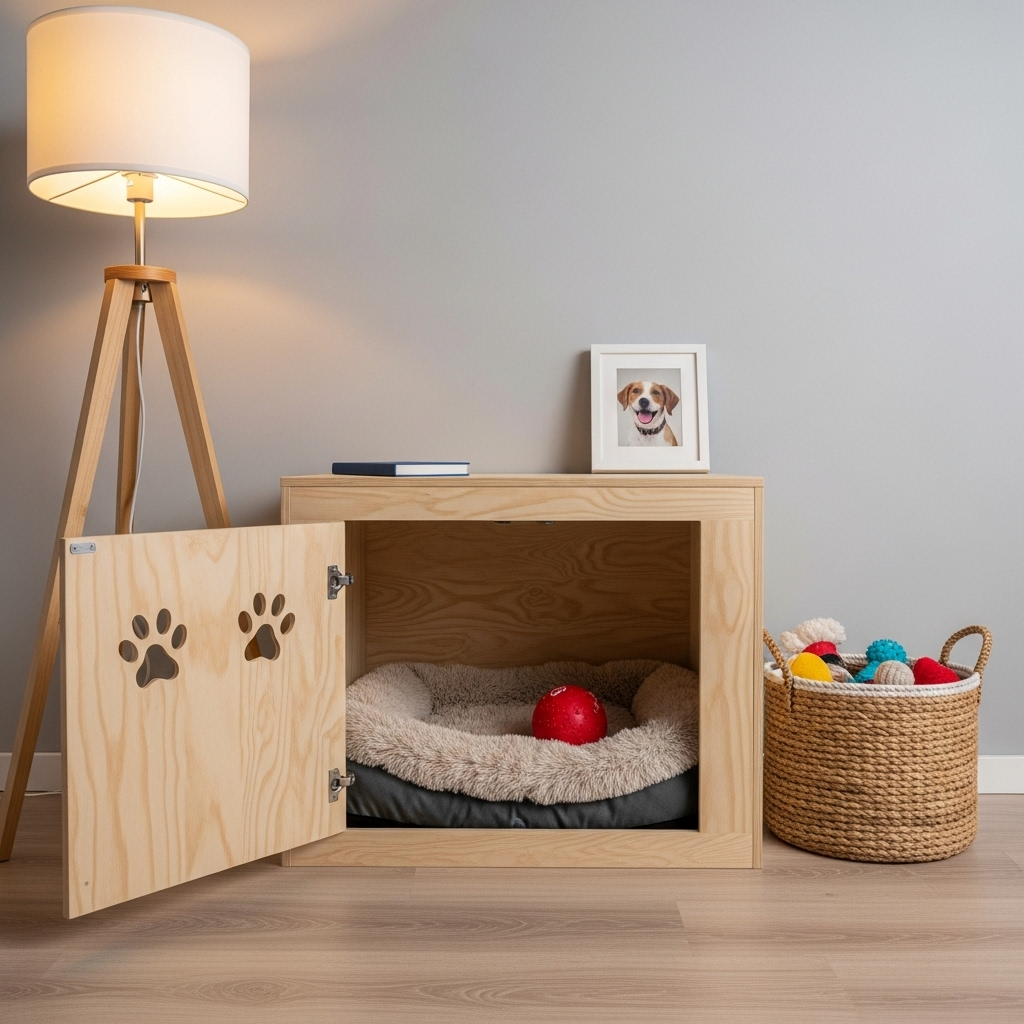
Every dog needs a den, a space that is exclusively theirs where they can retreat when overwhelmed. This could be a crate (never used for punishment) with a comfy bed and a favourite toy, or even a quiet corner of a room. During a stressful event like a party, you can even enhance this space by playing calming music. Research published in the journal Physiology & Behavior has shown that specific types of classical music can reduce stress behaviours in kenneled dogs, a principle that works just as well at home.
4. Pheromone Diffusers & Sprays
Pheromone products, like Adaptil, mimic the calming pheromones released by a mother dog after giving birth. These can be surprisingly effective for calming anxious dogs experiencing situational stress. I often recommend them to clients whose dogs are afraid of thunderstorms. A study in the Journal of the American Veterinary Medical Association found that these diffusers significantly decreased signs of anxiety in dogs during a simulated thunderstorm. They are available as plug-in diffusers, sprays for bedding, or collars.
5. Distraction with High-Value Treats
Sometimes, the best way to short-circuit a building panic is with a positive distraction. A puzzle toy filled with peanut butter or a high-value chew can redirect your dog’s focus from the scary trigger to a rewarding activity. This method is particularly useful for predictable, short-term stressors like the mail carrier’s daily visit.
Long-Term Strategies for a More Confident Dog

While in-the-moment techniques are vital, the ultimate goal is to build your dog’s resilience. These long-term strategies are foundational for calming anxious dogs and helping them feel more secure in their world.
6. Consistent Routine & Predictability
Dogs thrive on routine. A predictable schedule for feeding, walks, and bedtime helps them understand their world and reduces generalized anxiety. As noted in Blackwell’s Five-Minute Veterinary Consult: Canine and Feline, establishing a consistent daily structure is a cornerstone of managing separation anxiety, as it builds a dog’s confidence and sense of security. Calming anxious dogs often starts with this simple, predictable foundation.
7. Desensitization and Counter-Conditioning (DSCC)
This is the gold standard for treating phobias. It involves exposing your dog to a very low-intensity version of their trigger (desensitization) while pairing it with something they love, like a delicious treat (counter-conditioning). For a dog afraid of the vacuum, you might start with it just sitting silently in the room while giving treats. This process is slow and requires patience, but as outlined in veterinary behaviour texts like the Saunders Manual of Small Animal Practice, it is the most effective way to change a dog’s underlying emotional response, making it a cornerstone technique for calming anxious dogs with specific fears.
8. Physical Exercise & Mental Enrichment
A tired dog is often a less anxious dog. Regular physical exercise helps burn off excess nervous energy. Just as important is mental enrichment. Puzzle feeders, scent work games, and training sessions give your dog a “job” to do, which builds confidence and prevents boredom, a common contributor to anxiety. Calming anxious dogs is much easier when their basic needs for stimulation are met.
9. Calming Supplements & Nutraceuticals
The market is full of supplements, but some have genuine science behind them. Products containing L-theanine, Tryptophan, or hydrolyzed milk proteins can have a mild calming effect. These can be a great adjunct therapy, but are not a magic bullet. Think of them as one tool in your toolbox for calming anxious dogs, and always discuss their use with your veterinarian first.
10. Consulting a Professional
You don’t have to do this alone. If your dog’s anxiety isn’t improving or is affecting their quality of life, it’s time to call in reinforcements. A veterinarian, a certified veterinary behaviourist, or a certified professional dog trainer can provide an accurate diagnosis and a tailored treatment plan, which is the most reliable path to calming an anxious dog.
Your 5-Minute At-Home Checklist for a Calmer Dog
When you feel overwhelmed, run through this quick checklist. This is your immediate action plan for calming anxious dogs in a stressful moment:
- Environment Check: Is the TV or music too loud? Is the room calm and quiet?
- My Demeanor: Am I calm? Is my breathing slow and steady?
- Offer a Safe Space: Is their crate or favourite bed easily accessible?
- Provide a Distraction: Do I have a puzzle toy or a special chew ready?
- Initiate Gentle Contact: Have I tried slow, gentle petting or massage?
When to See Your Veterinarian: Recognizing Severe Anxiety
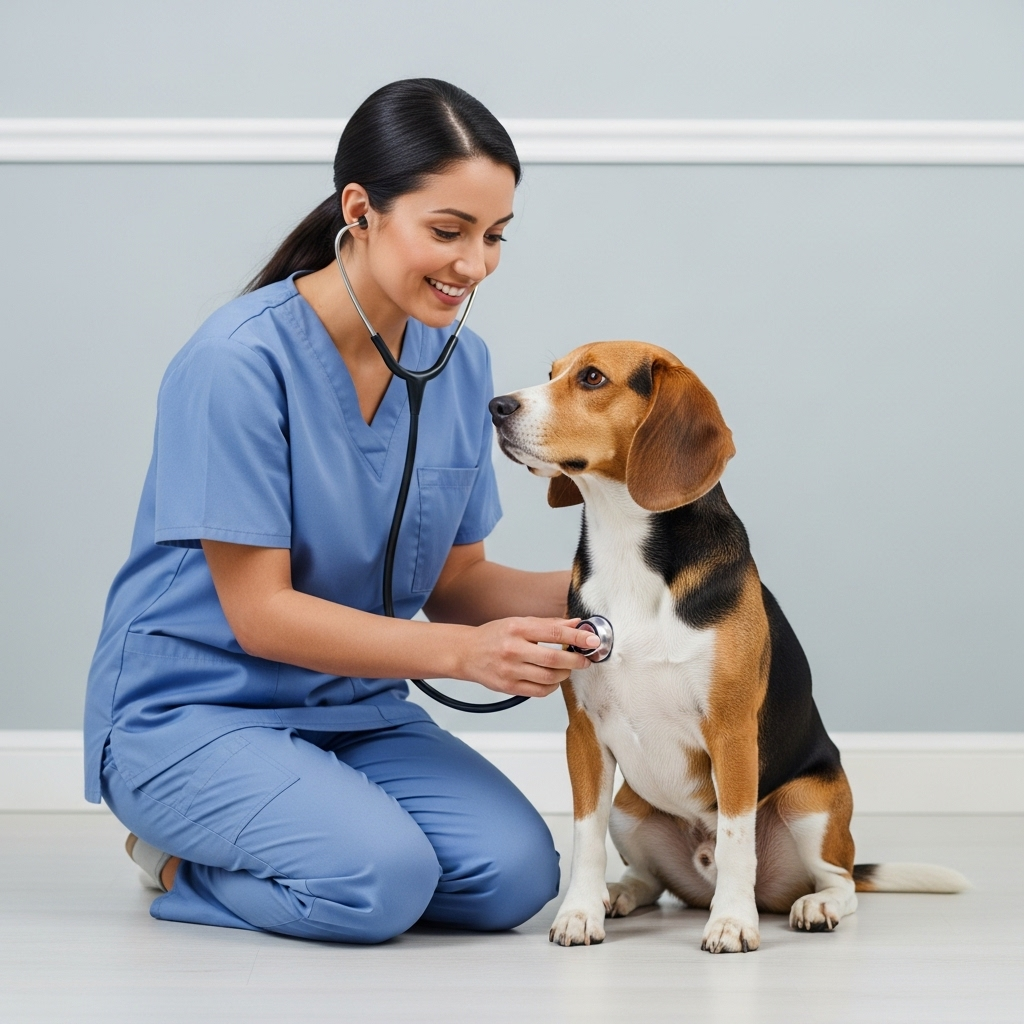
While the techniques above are excellent for mild to moderate anxiety, some situations require professional medical intervention. If your dog is displaying destructive behaviour, self-harm (like licking sores on their legs), house soiling, or aggression, it’s time to book an appointment. These can be signs that a behavioural medication is needed to help manage the chemical imbalances in the brain, making calming your anxious dog possible.
Table: Typical Canadian Costs for Anxiety Consultation & Treatment
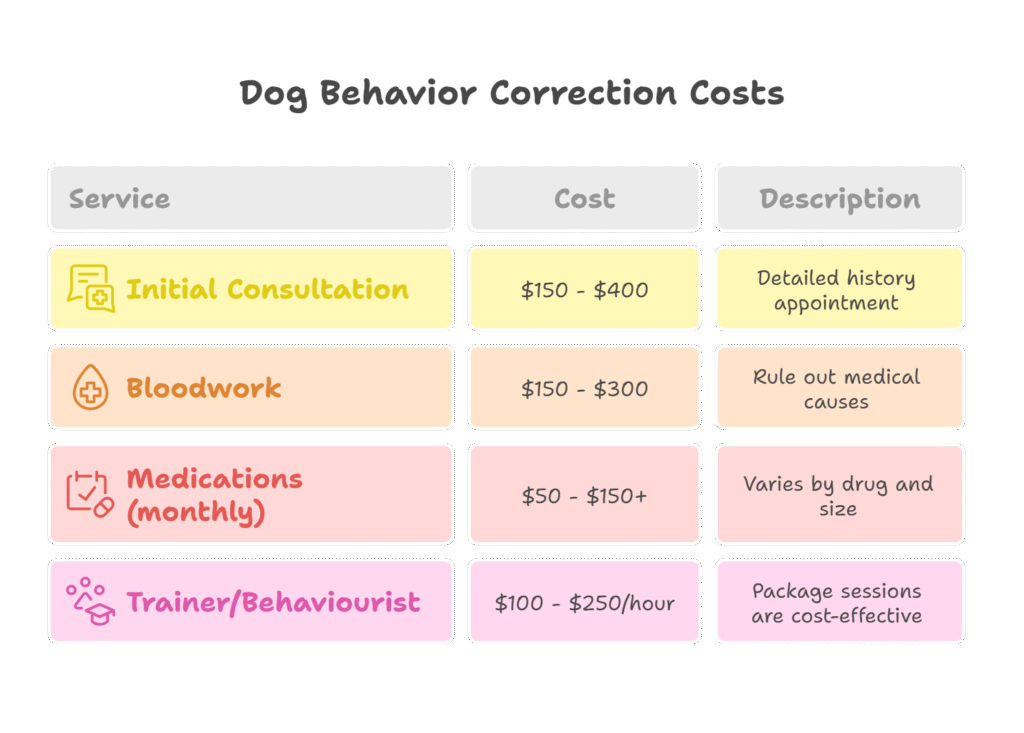
Note: These are estimates and can vary significantly based on your location and specific clinic.
People Also Ask: 4 FAQs About Calming Anxious Dogs
1. Can I give my dog CBD oil for anxiety?
While there’s a lot of buzz around CBD as a potential solution for calming anxious dogs, it’s absolutely crucial to speak with your vet before giving your dog any CBD product, as a professional consultation is the safest starting point. They can help you navigate the proven methods for calming anxious dogs and ensure any approach you take is appropriate for your pet’s specific needs, making the overall process of calming anxious dogs safer and more effective.
2. Will getting another dog help my dog’s separation anxiety?
Unfortunately, this often doesn’t work and can sometimes make things worse. The anxiety is about being separated from you, not just about being alone. Now you might have two anxious dogs. Calming anxious dogs requires addressing the root cause, not just adding a companion.
3. Is it my fault my dog is anxious?
Not. While our behaviour can influence our dogs, anxiety is a complex issue with genetic and environmental components. The most important thing is that you’re seeking solutions and working on calming your anxious dog now.
4. Do calming vests or “thundershirts” actually work?
For some dogs, yes! The gentle, constant pressure can have a swaddling, calming effect, much like swaddling an infant. It doesn’t work for every dog, but for many, it’s a safe, drug-free tool worth trying in your efforts for calming an anxious dog.
A Final Word of Reassurance
Navigating your dog’s anxiety can feel like a long and winding road, but every small step forward is a victory. Remember that progress, not perfection, is the goal. Your patience, your love, and your commitment to understanding their world from their perspective are the most powerful medicines you can offer. By combining these techniques and working with professionals when needed, you are not just managing a problem; you are deepening the bond with your beloved companion and guiding them toward a more peaceful, confident life.



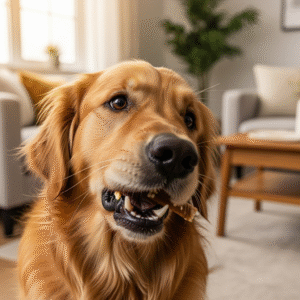
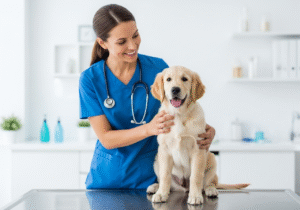
Pingback: Dog Chewing Furniture: 7 Proven Steps for a Happier Home